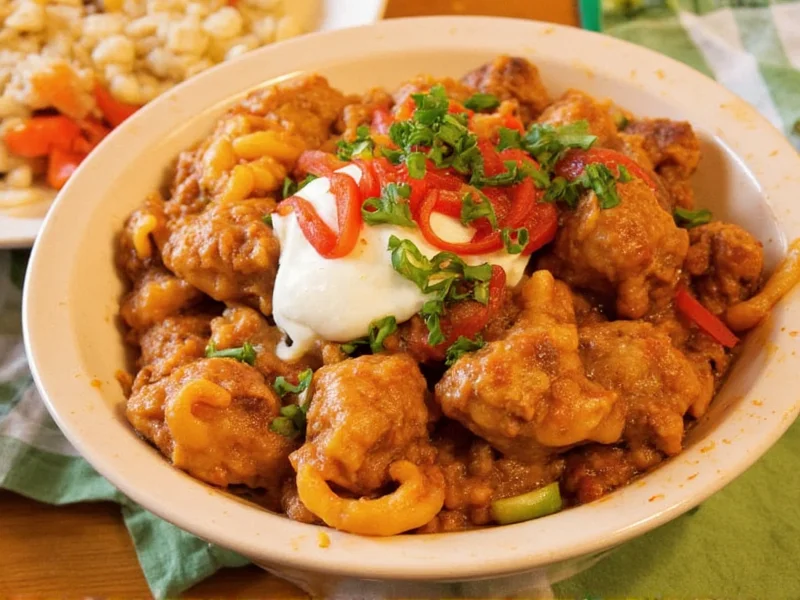Many people mistakenly use the terms "Cajun" and "Creole" interchangeably when discussing Louisiana cuisine, but these represent two distinct culinary traditions with unique histories, ingredients, and cooking methods. Understanding the difference between Cajun and Creole cooking reveals much about Louisiana's cultural evolution and helps food enthusiasts appreciate each tradition's authentic characteristics.
Historical Roots: How Two Cuisines Emerged
Cajun and Creole cuisines developed from completely different cultural backgrounds despite both having French influences. Creole cuisine began in 18th century New Orleans among the city's established elite—people of French and Spanish descent born in the colonies. This cosmopolitan environment incorporated ingredients and techniques from African, Caribbean, and Native American traditions.
In contrast, Cajun cuisine traces back to the 1750s when French colonists were expelled from Acadia (modern-day Nova Scotia). These Acadians settled in rural Louisiana's bayous and prairies, adapting their French cooking techniques to available local ingredients. Without access to many traditional French ingredients, they created resourceful one-pot meals using game, local vegetables, and spices they could grow themselves.
Ingredient Showdown: What Sets Them Apart
The most reliable way to distinguish authentic Cajun vs Creole recipes is by examining their foundational ingredients. While both cuisines use the "holy trinity" of onions, celery, and bell peppers (replacing the French mirepoix of onions, celery, and carrots), their approach to other key components differs significantly.
| Characteristic | Cajun Cuisine | Creole Cuisine |
|---|---|---|
| Tomatoes | Rarely used (considered non-traditional) | Common ingredient, especially in sauces |
| Roux | Darker, longer-cooked (chocolate to brick color) | Lighter, shorter-cooked (peanut butter color) |
| Primary Proteins | Game meats, chicken, sausage | Seafood, domestic meats, game |
| Spice Profile | Heat built through cooking process | More balanced, complex seasonings |
| Cultural Influences | French Canadian, rural adaptations | French, Spanish, African, Caribbean |
Debunking the Spice Level Myth
One of the most persistent misconceptions is that Cajun vs Creole spice levels differ fundamentally, with Cajun automatically being spicier. In reality, heat levels vary by cook and recipe in both traditions. Traditional Cajun cooking develops heat gradually through the "holy trinity" and cayenne pepper added during cooking, while Creole dishes might incorporate hot sauce at the table. The difference isn't in inherent spiciness but in how heat is incorporated into the cooking process.
Cooking Techniques Compared
Cajun cooking evolved from necessity in rural settings, resulting in practical one-pot dishes like jambalaya, étouffée, and boudin. These dishes were designed to feed large families with available ingredients, often cooked over open fires. The darker roux—cooked for 30-60 minutes—provides deep flavor and thickening power for these robust dishes.
Creole cooking, developed in New Orleans' more cosmopolitan environment, features more refined techniques with European influences. Dishes like shrimp Creole, chicken Creole, and traditional gumbo often include tomatoes and a lighter roux, reflecting the city's access to diverse ingredients through its port. Creole cooking typically involves more complex layering of flavors and multiple cooking stages.
Is Gumbo Cajun or Creole? Understanding the Classic Dish
When people ask is gumbo Cajun or Creole, the answer reveals the distinction perfectly. Both traditions have their version of gumbo, but they differ significantly:
- Creole gumbo typically contains tomatoes, okra or filé powder, and seafood or chicken, reflecting New Orleans' diverse influences
- Cajun gumbo features a darker roux, no tomatoes, and often includes game meats like squirrel or rabbit, reflecting rural resourcefulness
This single dish demonstrates how what makes food Creole vs Cajun comes down to specific ingredients and preparation methods rather than just regional labels.
Modern Interpretations and Blending Traditions
Today, the lines between Cajun and Creole cooking have blurred, especially outside Louisiana. Many restaurants use "Cajun" as a marketing term for anything spicy, while "Creole" often denotes New Orleans-style dishes with tomatoes. Authentic Louisiana chefs, however, maintain the distinctions based on historical preparation methods.
Understanding Louisiana Cajun and Creole food history helps appreciate why certain dishes appear the way they do. When examining a menu or recipe, look for the presence of tomatoes, the color of the roux, and the primary proteins to determine whether you're experiencing authentic Cajun or Creole cuisine.
How to Identify Authentic Dishes
When encountering Louisiana cuisine, use these guidelines to determine if a dish is traditionally Cajun or Creole:
- Check for tomatoes—Creole dishes typically include them, while traditional Cajun does not
- Examine the roux color—darker indicates Cajun, lighter suggests Creole
- Consider the protein source—game meats point to Cajun, seafood-heavy dishes lean Creole
- Assess the spice integration—Cajun heat builds during cooking, Creole often offers heat at the table
- Consider the dish's complexity—Creole often features more layered techniques
These markers help navigate traditional Cajun dishes vs Creole preparations and appreciate each tradition's unique contributions to American culinary heritage.











 浙公网安备
33010002000092号
浙公网安备
33010002000092号 浙B2-20120091-4
浙B2-20120091-4